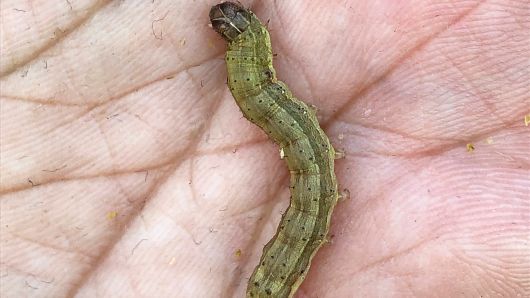Destructive pest could spread to all of China’s grain production in 12 months

The voracious, inch-long fall armyworm, the larval form of the armyworm moth, can breed rapidly, spread great distances and is hugely difficult to eradicate.In recent years the armyworm has ruined agricultural produce across Africa and the Americas, where it originated, and has now begun to march across Asia.It has a large impact on a wide range of crops, including important Chinese staples such as rice, soybeans and corn.According to the US report, prepared for the Department of Agriculture (USDA), it may have already spread to a range of southern Chinese provinces including Yunnan, Guangxi, Guangdong, Guizhou, Hunan and Hainan.The Chinese Ministry of Agriculture and Rural Affairs has taken emergency measures to control the spread of the armyworm, the United Nations Food and Agriculture Organization said in January.The new pest comes as the Chinese government faces a number of daunting agricultural challenges. Every province in the country has now been affected by the swine fever virus, which is devastating the pork industry, a staple of the Chinese diet.While it is not harmful to humans so far, more than 1 million pigs have been slaughtered in the past year in China to try to halt the spread of the virus.Meanwhile in response to US trade tariffs put in place by the Trump administration, Beijing imposed restrictions on the purchase of American soybeans, making domestic crops increasingly important for Chinese consumers.According to the USDA report, the armyworm was first discovered in China on January 29 in Yunnan province, having entered from neighboring Myanmar. “Private and government affiliated crop protection experts in China report that the worm has spread much faster than they expected. More recently, the pest was detected in isolated pockets of summer-season corn in Yunnan province. In Guangxi province, the pest has been detected in about one-quarter of all counties,” the report said.In 2018, Roger Day, program executive of Action on Invasives at CABI, said large parts of East and Southeast Asia were “environmentally suitable” for armyworm, including Bangladesh, Myanmar, Laos, Thailand, Vietnam, the Philippines, Indonesia, and China.India has begun attempting to tackle its own armyworm infestation with little success.In some parts of Africa, up to 70% of crops were destroyed by the armyworm, causing as much as $6 billion in damage across the continent.No large-scale solution to kill the pest, the larval form of the armyworm moth, has yet been found.CNN’s Swati Gupta contributed to this article.




